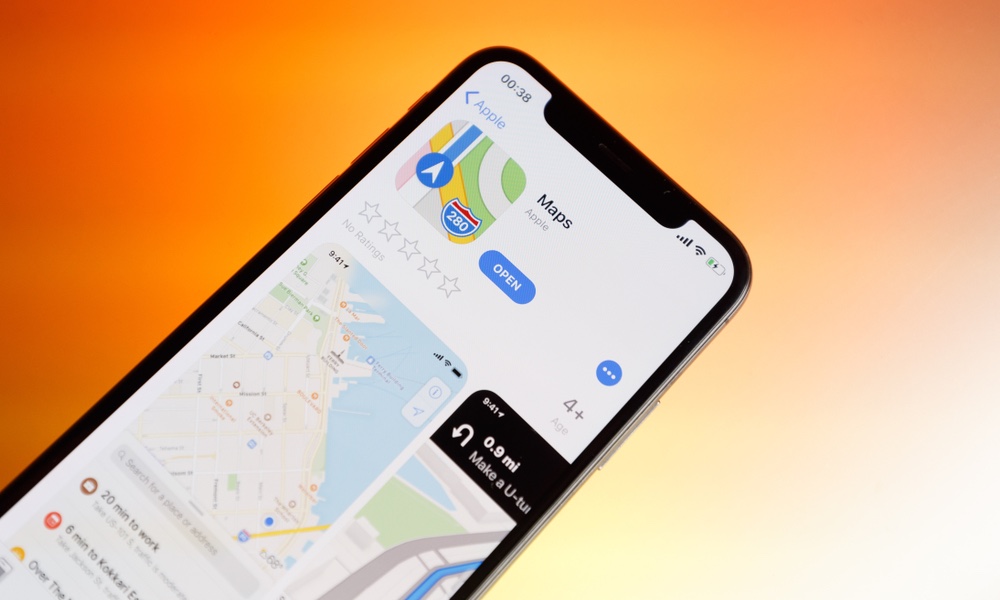Apple Maps Gains Even More Ground on Google with This New Feature
 Credit: Xander St / Shutterstock
Credit: Xander St / Shutterstock
Toggle Dark Mode
We’ll be the first to admit that Apple Maps got off to a pretty rough start when it debuted back in 2012, but that also means that it really had nowhere to go but up, and Apple has put so much effort into improving it over the years that it’s become a serious contender to Google Maps, and Apple isn’t sitting still, either.
Apple continues to pack in new Apple Maps features each year, and alongside iOS 14 came the addition of speed and red light cameras, cycling directions, guides, electric vehicle routing, and more detailed business info. Now it also looks like iOS 14.5 is poised to make even more improvements to the Apple Maps experience by bringing crowdsourcing into the mix.
Last month we heard news that Apple Maps will soon add the ability to report accidents, hazards, and speed checks, bringing it into more direct competition with Waze. You’ll even be able to use Siri to do it, avoiding the need to tap away at your iPhone while driving.
It doesn’t look like Apple plans to stop there, however, with new evidence revealing that it soon plans to start tracking how busy businesses and other points of interest are, using anonymous location data gleaned from other iPhone users.
These details were recently uncovered by a user on Reddit, who found some new text in the Routing and Traffic section of Apple’s privacy policy:
“Additionally, when you open an app near a point of interest (for example, a business or park) your iPhone will send location data in an anonymous and encrypted form to Apple which Apple may aggregate and use to let users know if that point of interest is open and how busy it is.”
This is similar in concept to what Apple has been already doing with traffic for years, and in fact the new text has simply been appended to the section in Apple’s privacy policy that has long been there to explain how your “iPhone will periodically send GPS data, travel speed, and barometric pressure” — anonymously, of course — in order to “augment crowd-sourced road traffic and atmospheric correction databases.”
The section on points of interest, however, is entirely new, and strongly points to Apple creating its own version of Google’s “Live Visit Data,” but of course doing this with Apple’s usual strong focus on privacy and anonymity.
Privacy First
Although Google has offered Live Visit Data for a few years already, with Google being Google, there’s little doubt that it’s considerably more privacy-invasive. In the case of Google Maps, your visits are linked to your timeline, since this data is only available to businesses for users who have “opted in to Google Location History.”
Therefore, even though Google claims that it’s using “aggregated and anonymized data” from those users, that just means that the businesses themselves don’t get to know who is visiting. However, since you can view this information for yourself in your Location History Timeline in Google Maps, obviously Google knows exactly where you’ve been.
In short, if you’re using Google Maps while you’re signed in to a Google account, you’re most definitely being tracked by Google. What Google does with this information is another matter, but there’s no arguing that it’s definitely storing it on its servers.
Apple, on the other hand, doesn’t deal in the trafficking of user information. While Apple Maps has used some crowdsourcing of data for years, the Maps app doesn’t transmit any personally identifiable information to Apple, since there’s no need for Apple to know who you are to improve Apple Maps or generate traffic information.
Whether it’s 500 cars on a specific freeway or 200 people in a park, Apple only cares about the numbers, not the identities, since it’s in the business of selling iPhones, and not advertising.
That said, even though it’s completely anonymous, Apple will still let you opt out if you really don’t want to share your location information with Apple Maps at all, and presumably this will be just as true with this new points of interest feature as it has been with traffic for years. Here’s how to opt out:
- Open your iPhone Settings app.
- Scroll down and tap Privacy.
- Tap Location Services.
- Scroll down to the very bottom of the list.
- Tap System Services.
- Scroll down to “Product Improvement.”
- Tap the switch beside Routing and Traffic to disable it.
You’ll also find several other settings you can toggle off here if you’d like to stop using location services for those features as well, but it’s important to remember that in each of these cases, your location data is being shared in encrypted form and with complete anonymity.
Not only is none of your location reporting tied to your Apple ID, but Apple goes a big step further by using completely randomized identifiers that constantly change, so that it’s not even possible to build an anonymous profile of your location history.
You can find a full list of all the ways in which Apple uses location services by visiting Apple’s Location Services & Privacy page. Of course, this privacy-first ideology isn’t shared by most app developers, so always keep that in mind when granting location access to a non-Apple app.






